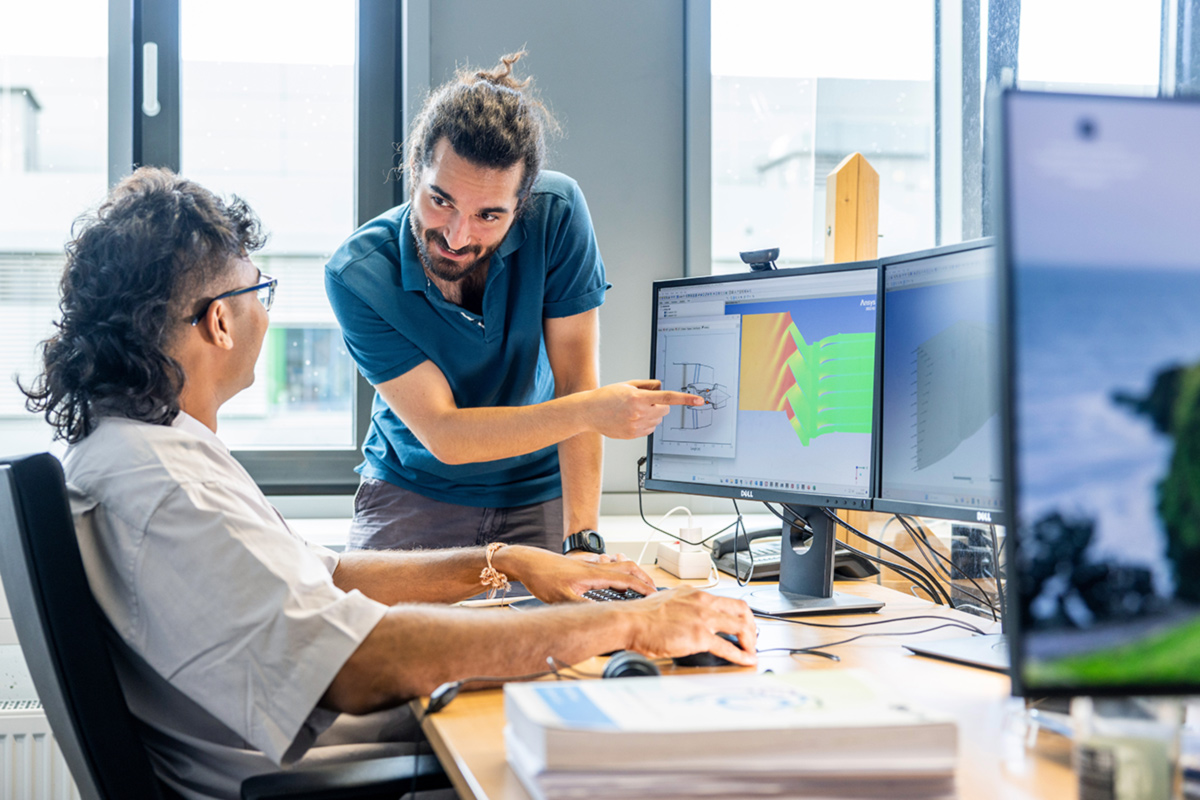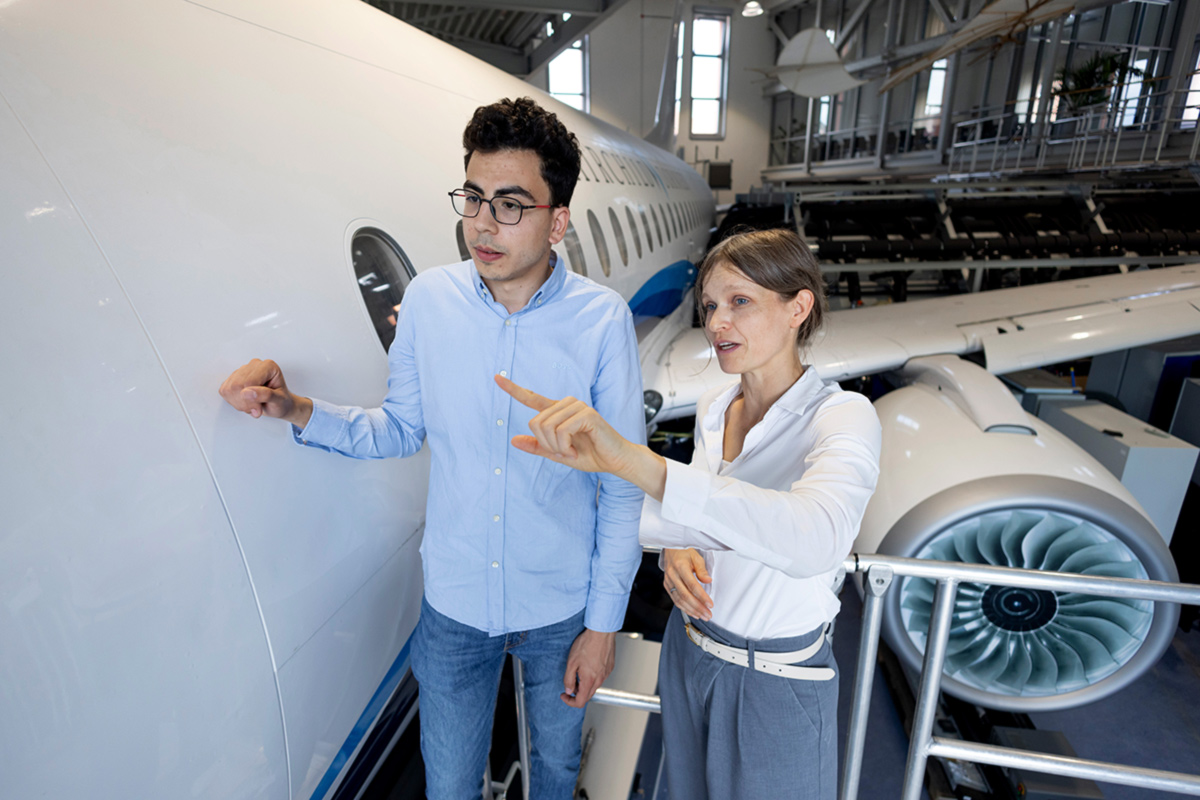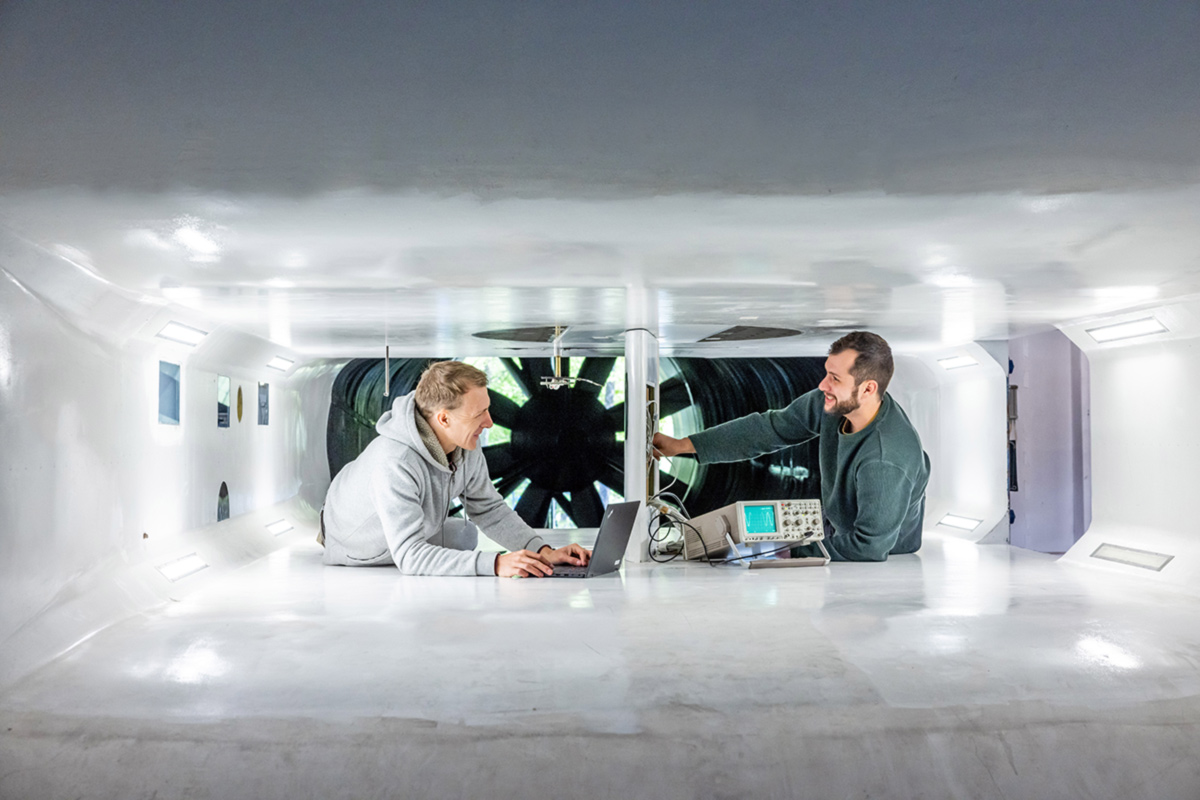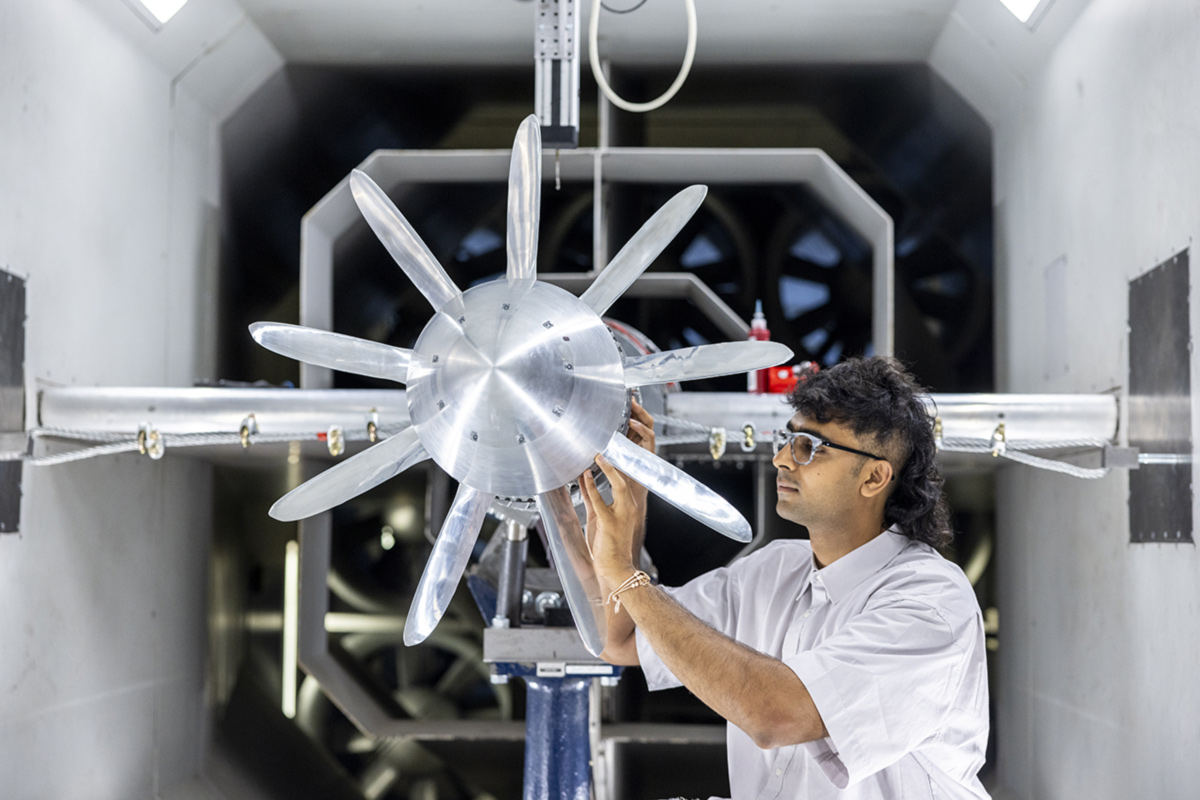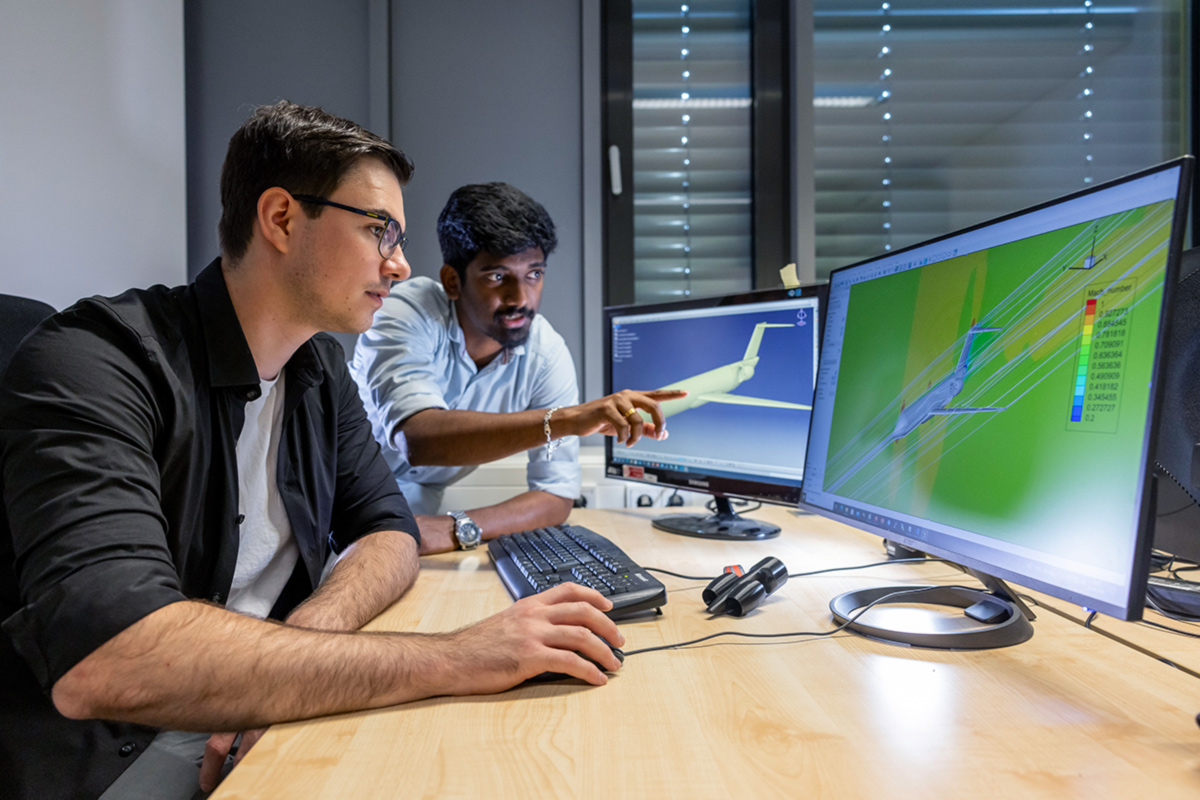C03: Control of inhomogeneous inlet flows
Project C03 will study the relevance of the intake shape for highly integrated aft-mounted engines on the overall efficiency of the aircraft. Different intake shapes will be developed and optimized for, both, a full-size aircraft and for the wind tunnel model (Project A01). Also, the potential of active flow control methods to tailor the inhomogeneous flow in the inlet will be explored and assessed in terms of benefit for the overall energy balance of the aircraft. The design will be based on detailed numerical simulations of the intake region. To validate the design method C03 will also participate in a wind tunnel experiment (Project A01) and will design and fabricate a suitable model of the intake.
Motivation
How can the intake/inlet shape contribute to optimize the synergy of a BLI-180 configuration and what potential offers active flow control?
- Integration of engines to utilize Boundary Layer Ingestion (BLI) generates strong distortions in the fan plane.
- Inlet and intake play an important role in modulating/mitigating these distortions.
- Optimization of the inlets must respect the total energy balance of the aircraft, including competing effects
Objective
Develop design and assessment methods for BLI-180 intakes, including the design of active flow control.
- Parametric representation of the geometry, parameter variations and adjoint shape optimizations
- Design of different versions for the intake/inlets
◦ Different operating conditions, different design strategies
◦ BLI-effect vs. fan performance degradation due to disturbances vs. AFC power demand - Basic validation by participation in wind tunnel testing
Approach
The project will begin by parameterizing the engine intake and inlet, which will be used to develop an initial reference geometry. This serves as a baseline and for coordination with other project partners. Based on this, a detailed study and optimization will be carried out using flow simulations and adjoint methods for a passive design (exclusively geometric variations, no active flow control). Two basic approaches are considered for the passive design: A geometry that is designed and optimized for all flight phases, or a geometry designed and optimized specifically for cruise flight. In parallel to the full-scale simulations, a wind tunnel model will be created with other project partners. This requires a separate geometry adapted to the conditions within the channel. Subsequent to the purely passive design, active flow control will be introduced in order to further increase efficiency in all flight phases and/or specifically to compensate for the phases not considered in the design. Towards the end of the project, wind tunnel tests with optimized geometries will be carried out to validate the simulation results.
Role in SynTrac
- Intake for wind tunnel model will be provided for A01, Participation at Wind tunnel experiments
- A02: Energy breakdown, Power balance
- Aircraft configuration, Flow fields & boundary conditions will be delivered by A03
- B04 will provide the fan efficiency in disturbed conditions, Nacelle & nozzle design
- B06: Morphing of inlet/intake surfaces







